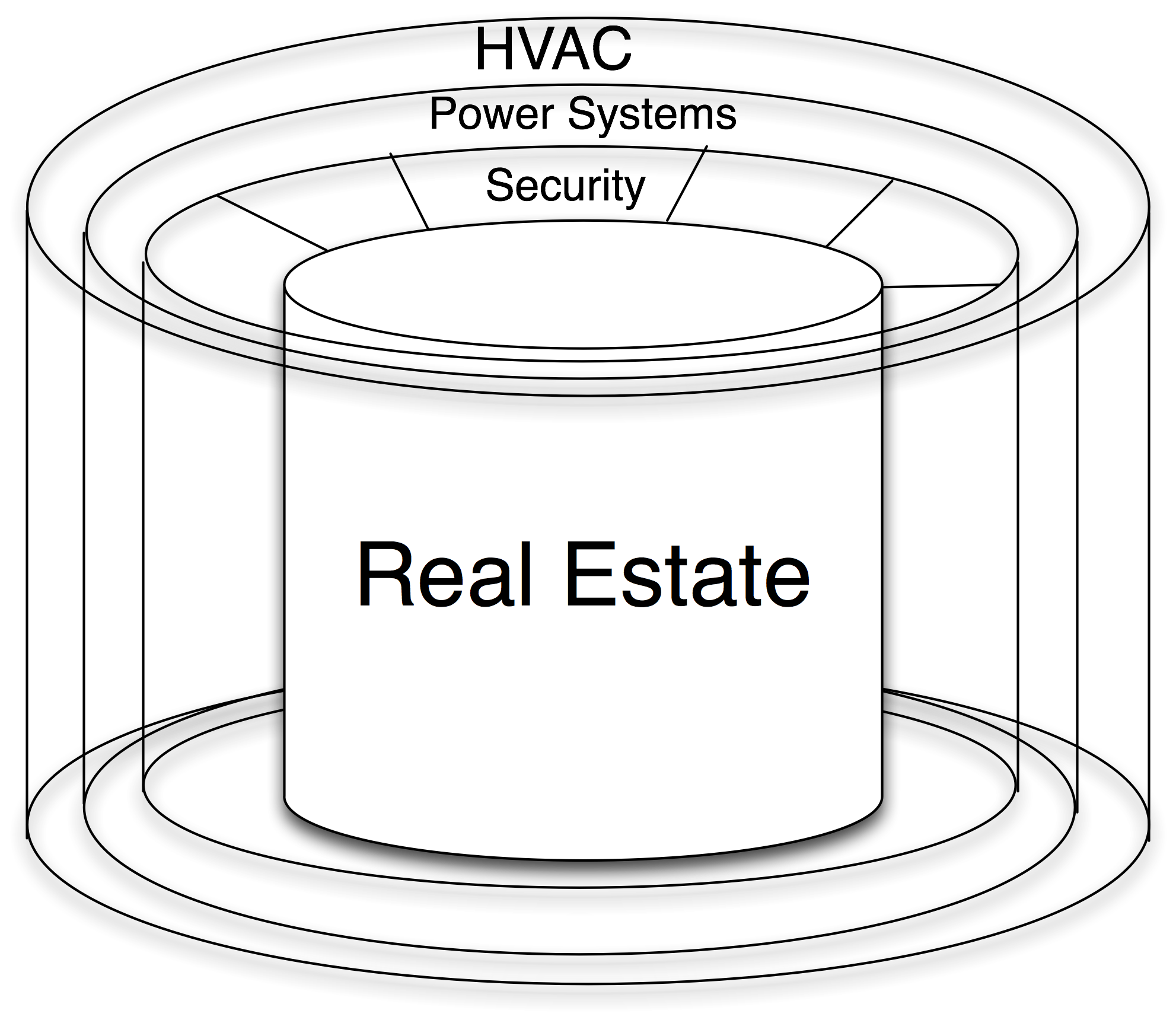Chapter 12 – Taxonomy of Data Centers
In this chapter we will build a model of an Internet Exchange based on the top of a model of an Internet Data Center. All Internet Data Centers (IDCs) are made up of similar data center components. All data centers built to house telecommunications gear have some form of:
- real estate to house the gear
- security infrastructure to prevent unauthorized access to the equipment
- reliable power infrastructure to make sure the gear continues to operate even when utility power fails
- Heating, Venting, and Air Conditioning (HVAC) systems to keep the equipment within its operating range
- data center operations staff to monitor and manage the operations environment in the data center
We present the key differentiators across the data center and colocation business models (Figure 12-1), and finish with a discussion of the differences between European- and U.S.-based IXPs.

Figure 12-1. The Internet Data Center Model.
The Basic Data Center Model
Every data center has at least the following four components: real estate, some form of security system, reliable power infrastructure, and air conditioning systems as modeled in Figure 12-2.
Now we will describe these model component rings:
The Heating Venting and Air Conditioning Model
The Data Center Operations Model
The Networked Data Center Model
The Internet Data Center Model
The US vs European Internet Exchange Point Models
Go read the next sequence of pages and come back and take the quiz below.

Figure 12-2. All data centers have the same basic building blocks.
Peering Workshop Practice Questions
Here are a few practice questions from the Internet Peering Workshop:
1. Between the U.S. IXP model and the European IXP model, which would you guess is more expensive and why?
2. Why can’t the European model IXPs price based on who the prospective customer is?
3. Which model (European or U.S.) probably has a higher operations cost?
4. Zaid Telekom, a large telco, opens a data center for its customers. They claim they will sell to anyone. They encourage their competitors to come and be customers there. This data center is best described as a
- carrier-neutral IXP
- U.S.-model IXP
- telco hotel
- carrier hosting facility
5. Snowhorn Real Estate Holdings converts a very large building into a multi-floor data center. They do not operate a network of any kind. They sell only floors and suites. This data center is best described as a
- U.S.-model IXP
- ISP POP
- telco hotel
- European-model IXP
6. Summa Corp. builds data centers across Africa and does not own a carrier or ISP network. They encourage carriers and ISPs to build in, but do not buy any services from them. This data center is best described as a
- European-model IXP
- carrier-neutral data center
- U.S.-model IXP
- ISP data center
7. Orlowski Internet Facilities builds data centers around the world and purchases bulk Internet Transit for resale inside its data center to its tenants. This data center is best described as a
- hosting company
- carrier-neutral colocation center
- U.S.-model IXP
- carrier POP
8.
Jumoke Centre builds a colocation data center complete with a peering fabric in Nigeria. It sells rack space to anyone but markets itself to the ISP community as a peering point. It does not operate a network and does not buy or resell any network. This data center is best described as a
- European model IXP
- carrier-neutral colocation center
- U.S.-model IXP
- carrier POP
9. Witteman Int’l operates a shared peering fabric across multiple colocation buildings. Other than this LAN, it does not operate a network. This data center is best described as a
- European-model IXP
- carrier-neutral colocation center
- U.S.-model IXP
- ISP data center
Answers to these questions are in the answer key in the back of the book.
